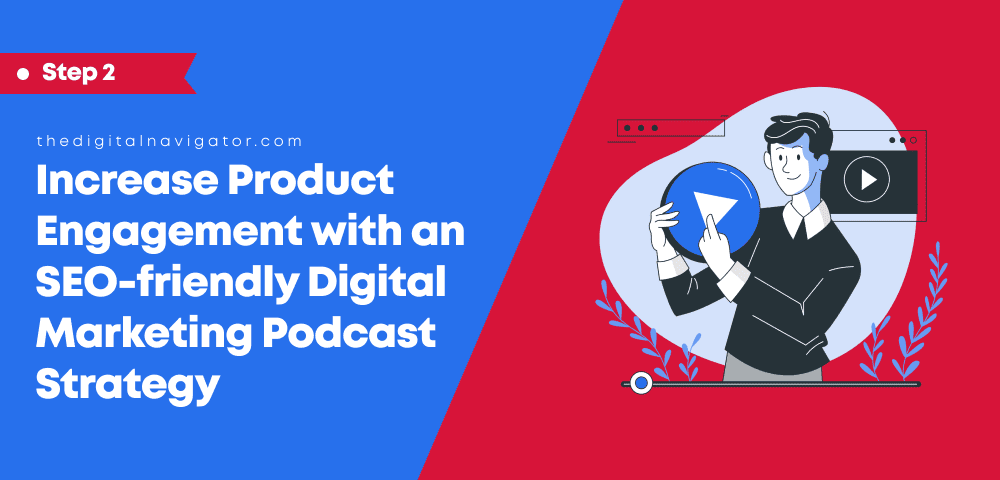How to Make Money as a Content Creator | Becoming a Content Creator
Published Date: |
Updated Date:
How Content Creators Make Money | Expert Guide to Content Creation
You see it all the time: online businesses making over $100K through great content creation and marketing. Learn how you can make money as a content creator with our expert content creation tips below.
This article is Part 2 of 3 in our guide to How to Make Money as a Content Creator | Expert Guide to Content Creation. Once you’re finished reading, skip to Part 3: How to Make MORE Money with Online Content, or go back to read what you missed in Part 1: Money-Making Content Basics.
With your business plan in mind, and armed with a few content products that are ready to sell (and which are perhaps already selling), it’s time to focus on growing your business using new tactics to sell the content you’ve already created.
In other words, you already know the basics of the content you want to keep creating, now its time to explore five potential product avenues you can use to take that content and really start making money as a content creator.

5 Content Models for How to Make Money as a Content Creator
These are content models that we like to build out for our clients, and we have seen a ton of success with each. The goal is to start with the first one, and then grow your business by adding the next ‘layer’ to your product.
1. Sign-ups for a pre-recorded online course
When you create a sign-up option for pre-recorded courses, you can commit to one of two models (or both, depending on the industry and the nature of the different products in your catalog).
Some prefer a time-based program – say, six to eight weeks – where others prefer a hybrid model that includes coaching.
The key here is that you want to incentivize people to sign up for your courses. With the time-focused program, you will promote a certain topic, and give signees a specific learning objective each week.
The hands-off approach means that when you offer the sign-up opportunity, students can work through the content themselves based on pre-recorded material.
A hybrid model for course sign-ups instead involves the key touch-points where signees benefit from additional opportunities to meet with the content creator or educator through Q&A or live coaching sessions.
Here, you are leveraging your expertise during interactions that ultimately create new content products (if they are being recorded) for use later down the line. As you grow these offerings, you can include them in your course catalog as well.
2. Workshops (or live courses)
Starting off with a workshop or course that you deliver live, generally through Zoom, can help you generate interest and awareness of your course. This is usually done via coaching or consulting on a one on one basis to generate higher ticket sales.
Workshops and live courses can be a general overview or an introduction of the course you are going to teach. This will allow the audience to set an expectation and understanding as to how you can educate or train them.
3. Flagship Offers
Once you are done with the workshop or a live course, you can create a flagship offer which you can charge for. Depending on the niche and industry, the price range usually ranges from $497 to $1,997 but it could be up to and above $4,997.
The main thing is to promote the flagship offer regularly, and enroll students several times a year.
4. On-demand course offerings
You can also develop a model where people can join your courses on an ongoing basis though an on-demand program, also known as an evergreen model.
You grow your course catalog and develop a subscription offer to make your business more secure while decreasing the amount of energy you have to exert.
This model works best if you have established a name for yourself as people would want to consult you for their queries and knowledge–but we will explore subscription models a little more in the next section.
5. Additional course programming
This program is similar to the signing up for a course model but this program is an extension of it. For instance, it is a continuation of the course for an additional level.
For example, once you complete the first level of the course, you can choose to continue to the second level and so on.
In addition, this program can also include a certification so that you can increase your business revenues. However, depending on the niche and course, offering a certification might not be a good idea.
No matter where you are in building out those product offerings, don’t forget the importance of marketing the content you want to sell.
Marketing your content in repeatable sales cycles through Facebook, LinkedIn, Twitter, or whatever social media marketing you prefer (email marketing, for example), is how you repeatedly sell the content you’ve produced.
3 Simple Steps to Make Money with Your Online Content
All content creators are likely to take their own path to creating content that actually makes money. That known, here is one process we’ve seen budding content creators use time and again to increase their existing online revenue (without a ton of technical hassle)
1. Organize a business model for your content
This is perhaps the most important step on how to become a content creator. You’re not going to get very far if you don’t have a framework when you start to establish new product offerings.
There are two fundamental approaches to doing this: some people build an audience first, and then determine how they will monetize their content later. Others have their business model first, and organize their content strategy to target that audience and get their attention.
Our opinion? A combination of both approaches is best. First, identify your primary or flagship product offering AND how you will build your audience. Then begin to look into how you will monetize the products within a business model.
Ask questions like: how many products do I need? How many products will I sell? How much will each product cost?
As you come up with answers, we advise focusing on one main product, and then the creation of smaller, related products at a lower price to get people interested in that big ticket item. This is a key part of learning how to make money as a content creator.
Next, take a look at other content businesses in your industry–or businesses in other industries that have a similar model. You might check out consultants in your space, or what other consultants outside your industry are doing.
Then, once you have a list of about five or ten, ask yourself:
- What types of content are they publishing? What format do they use? How often do they publish?
- What are the products and services they sell, and for how much?
- Where are they most active online?
- What lessons can I learn and apply to my own business from their example?
With all this information at the ready, you should be in a better position to create that business model and set yourself (or your team) in the right direction as growing content creators.
2. Start with Zoom & Google Drive
Zoom is a great place to begin creating audio or visual content products–particularly for educators and subject matter experts. Even if you only specialize in written content, you can create recordings of those readings to share with your audience.
You can do live sessions, record them, and voila–sellable content products you can market again and again.
There’s also not a lot of technical know-how involved, which means you can begin creating right away. Plus it’s free to use–though we also recommend getting the paid version to avoid the limitations of two people per meeting, or the 40 minute time constraints.
PS: Check out Vimeo as well, since you can connect Zoom and automatically upload videos there when recording to the cloud!
Once you have created a piece – or several pieces – of content there, you can just sell it through your existing web platform. Save it to a Google Drive for easy customer access, and share it with students, customers, or other audiences who reach out for education or information.
Soon, you’ll begin to see ways to organize that content into files, folders, or collections that may become a viable product in themselves.
“We recommend that our clients begin doing a live group program based on their material that they presell. That way they can simply show up on Zoom and start teaching while recording it, and later sell that material as a packaged course or module.”
3. Move to a Learning Management Platform
By the time you’ve come up with products you can sell repeatedly, or even collections of products, you’ll want to start implementing (or uploading) this content on a course delivery platform–usually referred to as a Learning Management System.
This is how to make money as a content creator.
The main benefit here is that as you accumulate more content products, it will become more difficult to keep them organized for your participants.
Imagine trying to find that old link to a video you created last year, and then sending it through email…an LMS will help you protect all the content you create in a really user-friendly way so nothing gets lost.
Using something like LearnDash – which is a WordPress integrated LMS – will for instance allow you to make one course where you can organize all the recordings you’ve made into different modules or segments.
That way, students or customers can log in, and easily find the materials they need depending on where they are in the course. Read more about LearnDash HERE.
We should also mention here that WordPress has several other benefits as well for content creators who want to expand their reach (say, into affiliate marketing)–it allows you to own your own website and be really flexible with the content you create as you grow.
You can also easily track your customer interactions to better build your business model.
If you’re curious to learn more about WordPress and why it might benefit you as a content creator in general, check out our latest guide on the top five website platforms for content creators and online businesses alike.
Explore Content Management Tools
Think you’re ready to head out and make some serious money with your content? Before you jump ship and start rolling in the dough, make sure you check out the next part of this article series, which explores how you can make even more money with the content you plan to create!
Schedule a consultation now to get help optimizing your ad campaigns, and check in on whether you’re offering the right products online.
That’s it for today!






0 Comments